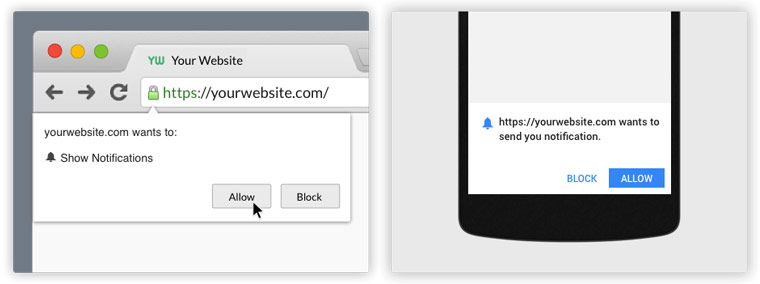
For a while there were favourable arguments to have an app rather than a mobile friendly website. One major talking point was an app’s push notification ability. What’s that you might be asking? If you’ve ever used an app like Facebook or Twitter on a phone and received a notification when you don’t even have the app open, that’s a push notification.
By developing an app, a company was able to let their users know what was going on immediately via a notification and encourage them to open their app again. For a moment in time browsers were unable to do this so having an app in the fast paced world that we live in made sense.
But in the past few years or so this has started to change. Apple’s operating system OS X Mavericks enabled Safari to use push notifications and Google’s web browser Chrome started to offer support for push notifications in version 42.
Although the support has been there for push notifications for a while now, the use of them isn’t always utilised. It is something that web developers have been working on to improve web design as a whole and it seems that web browser push notifications will eventually become the norm. This is obviously a good thing for web designers and developers but also good for businesses. At a point, if a company relied on needing notifications they would need to have both an app and website. If you want to do it right, this would be an expensive exercise as maintaining both and keeping everything in sync involved quite a lot of time and money! Now with browsers supporting push notifications, a business’ costs would be considerably less as it would no longer be necessary to have an app as well as a mobile friendly website.
How it Works
Browser push notifications work by sending users a message to reach and redirect them to a webpage via a browser instead of an app. These can work on desktop and mobile with the content of the message and the URL destination being defined by the brand. The users have the ability to control what messages they receive by opting in or out of categories defined by the brand. The brand can either set these themselves or use a programme to produce them based of their audience’s behaviour and engagement.
That is not to say that apps will disappear but especially for startups where the cost to building an app is too much, push notifications via browsers would allow small businesses to still reach their audience. With this added functionality and an aesthetically appealing mobile friendly website, small businesses now have a cost effective platform to really take off on.